#Surinamese Art
Explore tagged Tumblr posts
Text
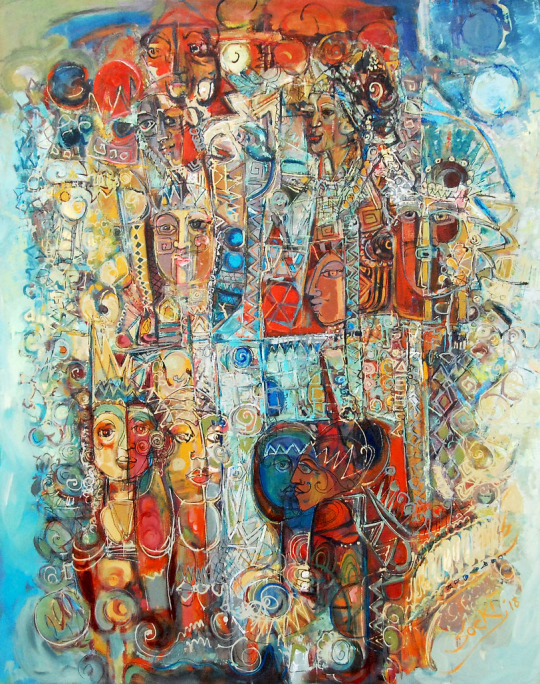
Soeki Irodikromo
« Alakondreman »
Acrylic on canvas, 120×150cm, 2018
#Soeki Irodikromo#Suriname#javanese surinamese#arte#art#south american art#the guyanas#caribbean#caribbean art#jawa suriname
11 notes
·
View notes
Text

Stanley Brouwn, This Way Brouwn, 1961
1 note
·
View note
Text

0 notes
Text
Maria Sibylla Merian was born #OTD (German, 2 Apr 1647 – 13 Jan 1717).
Here are a few of her works that were recently on display at the “Making Her Mark: A History of Women Art in Europe, 1400-1800” exhibition at Baltimore Museum of Art :
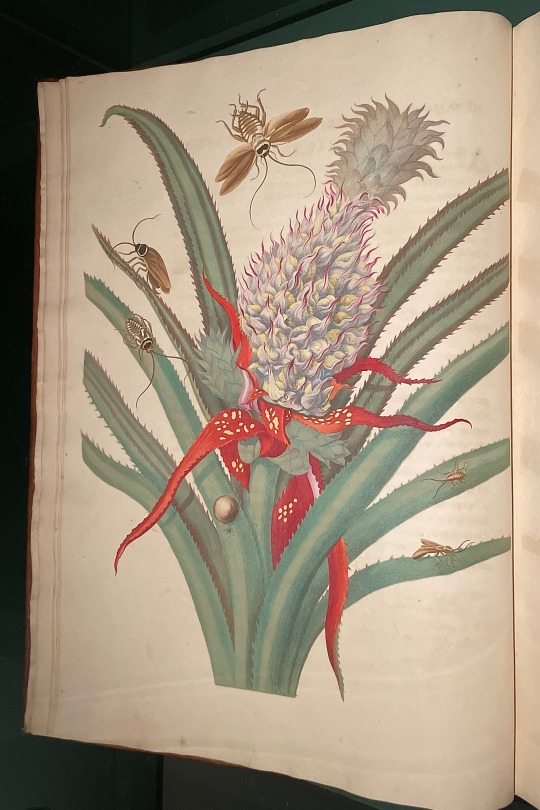

1. “Pineapple with Cockroaches” in Dissertatio de Generatione et Metamorphosibus Insectorum Surinamensium... (Dissertation on the generations and metamorphosis of Surinamese insects), 1719
Bound volume of hand-colored engravings and etchings
“This ripening pineapple's sweet aroma attracts a swarm of cockroaches. Maria Sibylla Merian observed this interaction during a three-year, self-financed voyage with her daughter Dorothea Maria to the South American country of Suriname, then a Dutch colony, in 1699. While there, Merian studied the native plant and insect life, learning their uses and behavior from enslaved African and Indigenous guides working at the sugar plantation where she stayed. In her notes, Merian characterized the pineapple as "the most outstanding of all edible fruits" and cockroaches as "the most infamous of all insects in America."
Merian's illustrations innovatively presented insect life cycles, habitats, and the broader ecological dynamic. After returning to the Netherlands, Merian published an illustrated compilation, creating one of the most important natural history publications of the time.
Her daughters Dorothea Maria Graff and Johanna Helena Herolt-Graff continued to issue editions after Merian's death, such as this deluxe version, contributing to their mother's foundational reputation in entomology.”

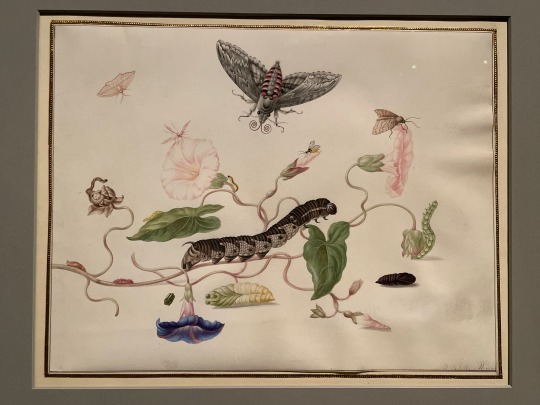
2. Frontispiece of Der Raupen wunderbare Verwandelung und sonderbare Blumen-Nahrung (The Wondrous Transformation of Caterpillars and their Curious Diet of Flowers), 1679-83
Bound volume w/ hand colored engraved illustrations
3. Convolvulus and Metamorphosis of the Convolvulus Hawk Moth, c.1670-1683
Watercolor w/ touches of opaque watercolor over indications in black chalk or graphite on vellum
“Maria Sibylla Merian had a close relationship with caterpillars, rearing them from egg to adult in her home over a decade. This engaging illustration of the life cycle of the convolvulus hawk moth on the wall above is the result of her sustained observations and her exceptional artistic talent. Creating an intertwined vignette of insect and plant life, Merian constructed a life cycle image that became a standard in scientific illustration and shaped the field of entomology. Her findings and illustrations contributed to a foundational reference text on insect metamorphosis, Der Raupen wunderbare Verwandlung und sonderbare Blumen-Nahrung, on display here.”
#animals in art#european art#museum visit#exhibition#Baltimore Museum of Art#Maria Sibylla Merian#women artists#women in science#women in STEM#book plate#frontispiece#watercolor#scientific illustration#natural history art#entomology#botany#caterpillars#butterflies#moths#lepidoptera#17th century art#metamorphosis#colonial art
13 notes
·
View notes
Text

Neato show at work today; I worked at a Maroon themed festival and was the only Surinamese employee from my workplace working at that Surinamese festival, I bonded with the guests and festival workers over our shared heritage. One of tje people running a food stand gave me a homemade pasty and springroll as a gift, that made it even more delicious as I ate it :)
The Maroons (enslaved from countries such as Suriname who fled their plantations and started a community in the woods) got me thinking, too!
My ancestors had it right, fleeing involuntary capitalism to start their own community (to put it lightly, I generally have nothing but love and respect for the things they had to go through and stay strong to survive so people like me got the freedom they fought for) but yeah, very intrigued about Maroon culture now and researching it for future art projects.
3 notes
·
View notes
Note
what qualities do you and your oc have in common?
oc q&a // @unbearablyindifferent
i actually put a lot more of myself in this oc than i initially thought i would: we are both of dutch-indian/surinamese descent, we both have dyscalculia and we have both been burned by the education system, we were both born prematurely and therefore our bodies don't do well with internal temperature regulation. we both like pineapple and anchovies (though not at the same time) on our pizza. we are both calm and would rather talk things through. we both have a strong sense of justice and right and wrong. we are both stubborn. we both have opinions tm. we both took our parents to a slam poetry night and came out afterwards. we both have tempers but those don't show until pushed to a certain point. we both love books. we both love languages. we both speak more than one. we both have done theatre and spoken word.
but she also has a lot of things that do not allign with me because udyati is so active and whenever i think about the things she'd be into, sports-wise, or martial arts-wise, i already get tired. she likes mushrooms on pizza while i cannot with the taste/texture. i think she's also a lot bolder than i am. or has become a lot bolder through interactions on here. she gives her heart away quite easily. she speaks hindi. she's the daughter of a single mother, etc.
3 notes
·
View notes
Text
amsterdam
Amsterdam, the capital city of the Netherlands, stands out as one of Europe’s most distinctive urban destinations. With its extensive network of canals, rich cultural heritage, and a progressive mindset, the city attracts millions of tourists every year. Whether one is drawn to its historical sites, modern art, or vibrant nightlife, Amsterdam offers a compelling mix of the old and new. Walking through its charming streets, you are immediately struck by the city’s unique architecture���narrow houses with gabled facades line the waterways, a visual legacy from the Dutch Golden Age.
One of the most captivating features of Amsterdam is its waterways. Often referred to as the "Venice of the North," the city’s canal belt is a UNESCO World Heritage site. These canals not only contribute to its aesthetic charm but also define its urban structure. Originally created in the 17th century for water management and transportation, the canals now provide a peaceful backdrop for biking, walking, or boating. Houseboats and canal cruises give visitors a chance to experience this water-centric lifestyle up close.
Amsterdam’s historical significance is deeply rooted in its long-standing status as a major trade hub. In the 17th century, it became the financial center of the world due to the establishment of the Dutch East India Company. Remnants of this prosperity can still be seen today in the form of grand merchant houses and important institutions. The Royal Palace on Dam Square and the Rijksmuseum offer glimpses into the wealth and influence of Amsterdam during this era. Museums such as the Anne Frank House serve as poignant reminders of more recent history, drawing millions of visitors who seek to understand the human stories behind major world events.
In addition to its historical richness, Amsterdam has evolved into a city that embraces innovation and diversity. The city is known for its liberal social policies and open-minded culture. From legalized cannabis in designated coffee shops to the Red Light District’s regulated adult entertainment industry, the city reflects a progressive approach to governance and civil liberties. While these elements often attract curiosity from tourists, locals see them as just one part of a broader cultural landscape.
Art and creativity play a central role in Amsterdam’s identity. The Van Gogh Museum, the Stedelijk Museum of Modern Art, and countless smaller galleries contribute to a vibrant arts scene. Music and theater also thrive here, with numerous festivals taking place throughout the year. Whether it's classical performances at the Concertgebouw or electronic music at sprawling warehouse parties, the city's eclectic taste ensures there is something for everyone.
Amsterdam’s culinary scene has grown into a dynamic blend of global influences and local tradition. While Dutch staples like stroopwafels, raw herring, and bitterballen remain popular, the city is also home to a wide variety of international cuisines. Indonesian, Surinamese, Turkish, and Moroccan food reflect the city’s colonial history and multicultural population. Farmers markets and sustainable eateries show Amsterdam’s growing commitment to environmentally conscious living.
Transportation in the city is both efficient and eco-friendly. Bicycles are the most common mode of transport, and the infrastructure strongly supports this choice with over 500 kilometers of dedicated bike paths. Trams, buses, and ferries also ensure smooth navigation through different districts. For tourists, renting a bike or purchasing an OV-chipkaart for public transportation can be a convenient way to explore the city like a local.
Amsterdam is also home to a wide range of parks and green spaces. Vondelpark, the largest and most popular, offers an urban oasis perfect for jogging, picnicking, or simply relaxing. Smaller parks and gardens scattered throughout the city make it easy for residents and visitors to connect with nature. The city’s environmental initiatives extend to urban planning as well, with many buildings featuring green roofs and energy-efficient designs.
The city’s neighborhoods each bring their own flavor and atmosphere. The Jordaan district, once a working-class area, is now known for its art galleries, indie boutiques, and trendy cafes. De Pijp is another bustling area popular with young professionals and students, while the Museumplein hosts world-renowned institutions and elegant architecture. Meanwhile, the Eastern Docklands showcase modern design and new urban development, reflecting the city’s ongoing transformation.
Despite its popularity, Amsterdam maintains a welcoming and laid-back atmosphere. It is a city that balances the pressures of tourism with the needs of its residents. Local governments actively work to limit overcrowding in certain districts and promote responsible tourism. Campaigns encouraging visitors to respect public spaces and neighborhoods have become more visible in recent years, helping to preserve the city’s character.
In conclusion, Amsterdam is a city that seamlessly blends history, culture, innovation, and livability. It is more than just a tourist destination—it’s a living, breathing example of how a city can honor its past while boldly stepping into the future. From its serene canals to its bustling squares, Amsterdam continues to capture the hearts of all who experience its charm. Whether visiting for a few days or staying long-term, the city leaves a lasting impression that is both enriching and unforgettable.
0 notes
Text
i’m working on making some au art of the marauders girls as an international girl group (a la katseye), and i’m struggling on what i want pandora’s background to be…
so far i have: lily is chinese/british from the uk, dorcas is surinamese-dutch, mary macdonald is trinidadian, emmeline is japanese, emma vanity is mexican
are there any headcanons about pandora that y’all like? i really don’t have any ideas for her here </3
0 notes
Text
Is Planning A Trip To Amsterdam Worth It?

Want to plan a trip to Amsterdam, Netherlands but unsure if it's worth it? Well, there are so many things to consider while planning your trip. But if you are looking for a fun-filled adventure with beautiful canals, rich history, and picturesque views, Amsterdam has got you covered. So, one thing is for sure, Amsterdam is 100% worth traveling! Despite all the crowds you may witness in peak season, this city is brimming with everything spectacular. From historical museums to exquisite natural beauty, you will love your days spent here exploring the scenic views and vibrant culture.
Several museums to explore
One of the best things about Amsterdam is that it has a wide variety of museums to offer for the taste of every individual. Whether you love to explore the art of famous artists or love to dive into history, you can find something in Amsterdam to explore and enjoy. If you love art, then you can visit the Van Gogh Museum, Rijksmuseum, or Stedelijk Museum. If you love to explore history, then you can explore the Jewish Museum or Anne Frank House.
Besides this, there are several other museums in Amsterdam that you can explore to enjoy a unique experience. However, you have to book the slots in advance so that you can visit the museum without any unnecessary hassle. You can check out different museums at thingstodoinamsterdam.com and then pick your favorite ones to book the tickets in advance.

Vibrant Nightlife
Amsterdam offers amazing nightlife, especially for party lovers. There is a wide array of cocktail bars, pubs, luxury clubs, and karaoke spots where you can enjoy some quality time with your loved ones and close friends. The city comes alive after dark with an array of entertainment options to suit all tastes. The city’s liberal and open-minded culture creates a welcoming environment for everyone. So, you can easily create memorable night-out memories in the capital with your loved ones. Whether you like to dance the night away, enjoy a canal-side drink, or explore some late-night cultural events, Amsterdam's nightlife scene is sure to impress.
Perfect for surrounding adventures
Amsterdam is the perfect place to plan a day trip with your gang. You can explore the local nature of the Netherlands by pacing your base in Amsterdam and planning different adventures. There are several options for day trips and weekend getaways. You can explore The Hague where you will get an outstanding beach with several impressive museums.
You can opt for a train and visit the club houses in Rotterdam and then visit the Markthal to enjoy some delicious food options. You can even rent a car with your friends and explore fairytale castes, flower gardens, and other lesser-known spots to admire the beauty of the region. In short, from adventure to some relaxing laid-back experience, you can plan everything from Amsterdam easily.
Delicious food spot
Amsterdam is like a paradise for food lovers. The Dutch capital offers a wide range of dining options that highlight both traditional cuisine and international flavors. The city boasts numerous Michelin-starred restaurants, trendy cafes, and vibrant food markets. Moreover, you can enjoy local favorites like stroopwafels, herring, and Dutch pancakes at street vendors and specialty shops. On top of this, the Jordaan neighborhood is known for its cozy eateries, while De Pijp features the famous Albert Cuyp Market with its diverse food stalls.
Amsterdam also caters to global tastes, with a rich selection of Indonesian, Surinamese, and Mediterranean restaurants. Whether you want to savor the gourmet dishes in an upscale setting or enjoy the local street food, Amsterdam will definitely satisfy your palate.

The Bottom Line
By now, you must have got an idea of what Amsterdam has to offer. The warm hospitality of locals who respect all religions and sexualities is a great thing to witness as well. The only con that you may find is that some people may be too loud or on drugs and bother others. Just steer clear of this, you will surely love this European gem. We wholeheartedly recommend you to visit Amsterdam and you will not be disappointed at all!
1 note
·
View note
Text
[image description: art of Hatsune Miku with medium brown skin, wearing a Surinamese outfit and holding a rose. End ID]

Suriname miku 🇸🇷
189 notes
·
View notes
Text
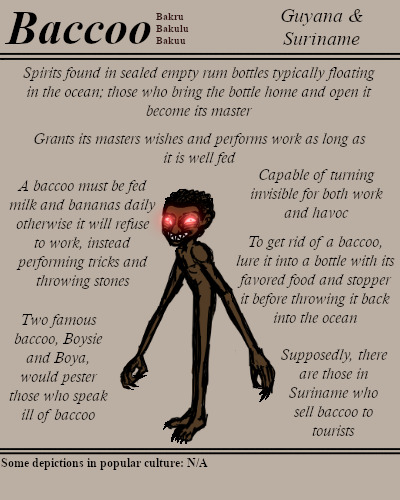
Found in abandoned rum bottles, baccoo are known for both their propensity to perform tasks or wishes of those who bring them home, as well as their trickster natures when they haven't been properly fed.
For those folks who find a baccoo more trouble than they are worth, they reseal the spirit in the bottle before tossing them back out into the sea. There the baccoo will remain until they are found by another person in the future.
#BriefBestiary#bestiary#digital art#fantasy#folklore#legend#myth#mythology#caribbean legend#carribean folklore#guyanese legend#guyanese folklore#surinamese legend#surinamese folklore#baccoo#bakru#bakulu#bakuu#spirit#trickster spirit#boysie and boya
9 notes
·
View notes
Text
The Emergence of a Diasporic Singular Desi Culture
I have been observing this for a while on several social media platforms and I have a theory that a singular “Desi” culture is taking shape in North America, and perhaps other diasporas. Since I haven’t had much experience with other diasporas in several years, I will only focus on this phenomenon through a North American lense.
The reason for saying is that I increasingly see young South Asians, in particular, Gen Z, make tiktoks mentioning how “our” culture is beautiful, and then proceed to show off cultural dress, cuisine, art, architecture etc. playing to a remixed Bollywood song.
The issue here is not showing appreciation, but the issue is using the singular from of culture instead of the plural — cultures.
South Asia is not a monolith, nor does it have one culture, so which culture in particular are we here appreciating? Every country, whether it would be Pakistan, India, Bangladesh, Nepal, (Southern) Tibet (controversial, I know) , The Maldives, Sri Lanka, Bhutan, and Diaspora countries like Suriname, Guyana, Belize, Trinidad & Tobago, Jamaica, Mauritius, Fiji etc. all have self-contained individual cultures that are inter-connected or unique to their own region.
These tiktoks, from my observation, show only Northern Indian cultural aspects with a heavy emphasis on Punjabi culture. Popular Tiktok dances feature Hindi and Punjabi, yet rarely any music from other states. Then again, it is called fyp for a reason. It may be the content I interact with, but then again I interact with a broad spectrum of self-stylized Desi creators on “brown tiktok”. From North to South.
Every now and then, there is legitimate criticism on limiting Desi tiktok to Hindi-Urdu and Punjabi songs where a number of videos have been circulating to test one’s “Desiness” whether you know these songs or not. Same goes for movies. If not, then you are white-washed. What about the rest, who don’t speak Hindi-Urdu or Punjabi? This is why being “Desi” is quite controversial because it means different things to different people.
Why do I think that there is singular North American Desi culture emerging? It is because Bollywood consumption plays a central role in it in making the younger generation believe that there is a such thing as one culture being portrayed in Bollywood while reality is something very different.
I as a Punjabi am used to seeing my culture being hyper-represented in Indo-Pak media. In fact, it is the culture that is used in Bollywood and Lollywood productions the most when we talk about cultural reprentation. Same for music, apart from Hindi, Punjabi is the only regional language that gets that much attention and gone worldwide – for good and bad reasons.
Home culture is very different. We all have our own home culture that we grew up in. We have our languages, our own foods, our own clothes, own histories, yet when these younger Desis present themselves to the outside world, it all dissipates and changed into this Bollywood-esque performance.
We suddenly ALL eat naan, biryani, samosein, jalebi, gulab jamun, roti and we ALL speak Hindi, wear saris, lehengas, shalwar kameezein and are ALL Indian, desi, and brown.
Yet, here I am, not knowing anything about other regional dishes other than my own which ironically is all of the above and more as a Punjabi-Pakistani. I have no idea what Gujuratis eat, no idea what Sindhis eat, I had no idea what Marathi sounded. I had no idea Bihari songs were popular. I have no idea what Assamese wear.
It disregards everything unique and hyper-focuses on Bollywood and Punjab as the source for this repackaged Desi culture. Bengali home culture, Punjabi home culture, Pashtun home culture, Tamizh home culture, Devehi home culture, Indo-Guyanese home culture, Indo-Surinamese home culture are all different environments, yet you won’t see that when you land on #browntok, instead you will see this generic brand where everyone supposedly can participate in disregarding that it leaves people out and alienizes anyone that doesn’t relate to “Desi culture”
I find it so odd that Patels are quite well represented, yet know nothing about Gujurati culture or their language other than “kemcho”. The reason why I bring this up is because the culture would be seen as foreign to the Desi-sphere and not recognizable as Desi because people views this “Desi culture” though a very narrow lense.
In a way this Desi culture is just repackaged Punjabi culture made palatable for the masses that are fixated on romanticized images of their home countries disregarding class differences, history, and culture. People don’t realize that only certain classe wore such ornamental dresses like the lehenga choli and thatvit was limited to a certain class or money and still is, yet is touted as something accessible to anyone.
Big “Indian” weddings are not the norm, they are the exception, yet still are juxtapositioned with White Weddings as being something extravagent. It only works if you or family have money.
Bottomline: this Desi singular culture does not exist outside of social media realistically because we all have our own cultural aspects that are unique. Bollywood is not an accurate and reliable cultural representation. You are not cultured by watching Bollywood movies, you are a good consumer. People need to show off their regional cultures more.
#pakistani#bangladesh#indian#southasian#brown#Desi#social media#tiktok#bhutan#sri lanka#nepal#the maldives#suriname#guyana#jamaica#indian food
33 notes
·
View notes
Photo


The Bakru [Surinamese mythology; Guyanese mythology]
In the Winti religion of Suriname, the Bakru are a kind of mysterious spirit. They are small humanoids, the size of a child, and their body is half wood and half flesh. They are often portrayed as kids with a comically oversized head.
Belief in the Bakru is still alive today. If I understand it correctly, they are a kind of malicious trickster spirit, but not particularly dangerous. In 2019, a man who stole car parts claimed that the Bakru spirits forced him to do it.
These creatures, also called Bakuu or Baccuu in Guyana, are known to make deals with humans. Such a deal makes the human rich and successful, at the cost of the wellbeing of his family members. When people become rich in a relatively short time, they are often accused of having made a contract with a Bakuu. This suspicion usually falls on people who seem to have changed after becoming rich, and those whose family members experienced misfortunes. They are said to ‘own’ a Bakuu. In addition, some Saramaka people claim that such a contract may involve sacrificing your newborn child.
Although often considered as relatively harmless, these spirits are known to possess people. When this happens, obeah-men (ritual healers) and priests of Kali (a Hindu deity) are called upon to exorcise the spirit.
It is dangerous, however, when a Bakuu owner dies or leaves. Those who move into the abandoned house will find themselves being plagued by the angry spirit: their valuables disappear, illnesses and diseases constantly plague them, etc.
Sources: Pires, R. B. W., Strange, S. E. and Mello, M. M., 2018, The Bakru Speaks: Money-Making Demons and Racial Stereotypes in Guyana and Suriname, New West Indian Guide. https://www.waterkant.net/suriname/2019/07/23/man-geeft-bakrus-de-schuld-voor-het-stelen/ (image source 1: ivarhennep.nl) (image source 2: Fabian Quinterro, concept art for Creatures of Myth and Legend trading card game)
32 notes
·
View notes
Note
Hi! I hope this isn’t bad to ask but I’m going to the Netherlands in a couple of weeks (first time traveling outside the US) and I was wondering if u have any recommendations on things to do/foods from the area I should try?
hi anon!
I've been thinking about this for a while, cause I wanted to give you some tips that aren't also in any google search, so here they are, sorted into an activity, food, and general tips to survive the country section (it's mostly focused on Amsterdam and Utrecht, cause that's where I have the most experience)
Under the cut cause I had a lot to say apparently
Activities:
In Amsterdam, I love the Hortus, which is a botanical garden dating from the 17th century! It's partly outside but there are several indoor parts that are really pretty!
This probably is in the google searches but the Amsterdam Light Festival is going on, and it's really fun. There's a walking route and boat tours, but you can also just keep your eyes open when moving through the city and spot the art works that way
The Hallen in Amsterdam is a really fun place to go if you want to do something a little more lowkey, there's a few cute stores, expositions, a market hall-style food place and a cinema, as well as some events that they host certain days!
I haven't done this myself but the Adam Tower (in Noord, so you can take the ferry from central station which is fun) has a lookout deck where you can see the whole city! There's a swing set where you can book a place to swing over the edge I think (Europe's highest swing let's go). My brother did this a few years ago and thought it was really fun!
If you like books Savannah Bay in Utrecht is one of my favs, one of the top bookstores I've ever been to in my life in general I think
When in Utrecht pls hit the Miffy stoplight, it takes 5 minutes and she's a national icon (it's literally just a stoplight with a Miffy figure and it's adorable)
This may not be worth it if you're only here for a short period of time but if you have a day where you want to escape the city, Dutch beaches are beautiful even in the winter! The practice of uitwaaien (lit. outblowing), or walking into the wind to feel more invigorated (specifically a winter thing and popular among the Dutch especially on Boxing Day or New Years Day), is really nice to do sometimes, and a beach walk can be nice for a change!
Food:
Stroopwafels are on every list BUT I'd specifically recommend getting a hot one somewhere, cause they're much better than the packaged ones! They sell them at outdoor markets and I'm sure there's also some stores that have them!
Everyone also always talks about hagelslag but I personally prefer vlokken, which is a similar concept but thinner so they're nice and crispy would recommend
If you want a quick lunch, Bagels & Beans is a small chain that's got places across the country, they have nice bagels and I have it on good authority the coffee's also good!
If you want to get takeaway food, I would highly recommend Surinamese food. These generally don't really have restaurants and the places I've been to haven't really differed in quality so I'd just pick a nearby one but you simply must eat roti (a dish popular across the Caribbean so not specifically Surinamese but delicious) it rules so hard
Editing this cause I just walked past an oliebollen stall and you should absolutely try one of those if you’re here on time they’re a traditional Dutch new years treat!
General tips:
Always look every way when crossing the street even if it's one-way cause bikes can and will come from everywhere
In a similar vein: some tourists think bike bells are rung simply for fun, they are not, they have the same function of a car horn! If you hear one please do get off the road lmao it'll save you a lot of cursing from the locals
Pretty much everyone here speaks English really well, but a general rule of thumb for non-English speaking countries is that it's really appreciated if you learn at least hello and thank you in the local language (hallo and dank je wel in Dutch)!
Finally, a request more than a tip: please don't rent a bike cause it's genuinely dangerous. 99% of tourists can't bike that well and even those that can aren't used to the type of traffic here, as it's incredibly chaotic because of all the bikes, and tourists on bikes are even less prepared for that than ones that are walking (I know it looks fun I get it but the amount of times I've almost gotten into an accident bc a tourist made a weird swerve is so high I just had to put this in)
I hope you have a lovely trip anon, enjoy!!! <3
#also dont be the guy that stepped in front of my bike yesterday to take a picture of the city with a ~local on bike~#thereby almost getting himself run over (by me)#but you sound nice and sensible i have faith you wouldnt do that to begin with#shut up judith
11 notes
·
View notes
Text
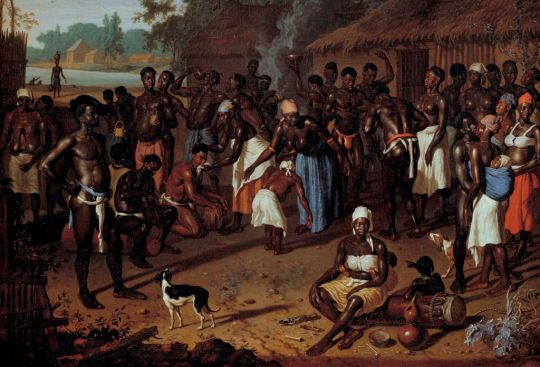
1707, o/d 58 x 46 Kopenhagen Statens Museum for Kunst
Dutch Painter: Dirk Valkenburgiyjj
TITLED: SLAVE DANCE
Article notes:
The Great Suriname Exhibition, in 2019 in De Nieuwe Kerk in Amsterdam.
Note: THIS EXHIBIT WAS THE FIRST TO BE APPROVED OF THE NUMEROUS REQUESTED IN THE NETHERLANDS....WHY?
"In itself an understandable choice because a ceremony or festivity can be seen in this work of art. The artist has depicted the large group of ‘partying’ people in great detail from myriad vantage points of the Surinamese people in community.( Although descriptions and accounts of this moment )".
HATE HOW THE WORK IS LITERALLY DEPICTING A CELEBRATION AND RITUAL AND IT STILL ENDED UP BEING
TITLED: SLAVE DANCE.
"This was also the case for another exhibition in the Nieuwe Kerk: Black is beautiful. Rubens to Dumas in 2008, which I curated".
One of the elements that has intrigued me for a longest time about this work is the woman with the bra on the far right. Did they already exist then? Did she invent it (I secretly hope so).
GIRL , IF YOU DON'T GET OUTTA HERE.
NOTHING I HATE MORE THAN A WHITE PERSON CURATING AN EXHIBIT CALLED "BLACK IS BEAUTIFUL". THIS IS WORTHY OF A KNIFE FIGHT!!!!
#cultural imperialism#Colonial Gauze#African History#African Art History#African Celebration#Suriname#African Rebellion
7 notes
·
View notes
Text

Armand Baag (Surinamese-Dutch, 1941-2001) - Art Does Not Pay (1984)
41 notes
·
View notes